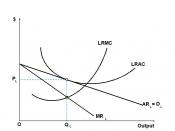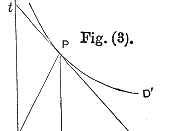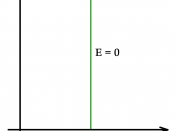Abstract
Determining price levels and pricing policy affects revenues and consumer demand and thus remains one of the most important elements in determining profitability and market share. Part of the pricing process involves the anticipation of competitive reactions to price changes and its economic effects on supply and demand.
This paper examines the effect of a price reduction strategy on product X given a hypothetical business situation. The paper discusses the business situation and provides an estimated change in profit with and without a competitive response given data received from marketing, general management and accounting. The final section concludes the paper.
Business Situation
In an earlier memorandum, product management requested data from marketing, general management, and accounting to help evaluate the effect of a proposed 10% price reduction on product X (see appendix A). Key data extracted for the evaluation is as follows:
Marketing
*Price Elasticity Calculation
PriceQuantity DemandedPrice Elasticity
$5.007
$4.5092.5 (absolute value)
%?Q = (7-9) / ((7+9) /2)) = -2/8 = -.25
%?P = ($5.00-$4.50) / (($5.00+$4.50) /2)) = .50/$4.75 = .10
Elasticity = %?Q/%?P = -.25 / .10 = - 2.5 elastic
*Therefore, if price decreases by 1%, quantity demanded increases by 2.5%. Given a price elasticity coefficient of 2.5 and a 10% price decrease, expect a 25% increase in quantity demanded (%?Q/%?P=E; E (%?P)=%?Q; 2.5%(10%)=25%).
*Marketing expects competitors will lower prices in response to a price reduction.
General Management
*Minimum profit margin of 30% annually
Accounting
*Under elastic demand, given a 10% decrease in price and a 25% increase in quantity, total sales revenue (TSR) will increase by 35% (%?TSR = %?P + %?Q = 25% + 10% = 35%). Note, where demand is elastic, total consumer spending moves in the opposite direction to price (Lieberman, 2000). The total amount of consumer spending is...



Determining pricing levels and pricing policies
good paper.. Good examples used...
1 out of 1 people found this comment useful.